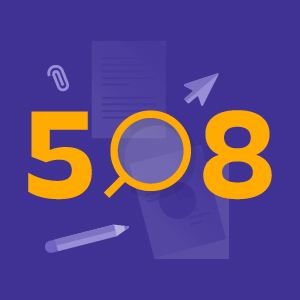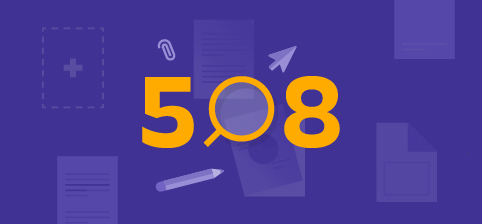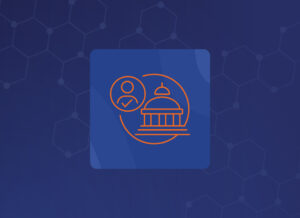Technology has enabled users with visual or other impairments to more easily navigate the world around them, and government organizations are increasingly expected to abide by basic digital accessibility standards and to comply with federal requirements.

One such requirement is aimed at federal agencies, ensuring the government’s digital presence is accessible to users with disabilities. Section 508, which is part of the Rehabilitation Act of 1973, mandates that all electronic and information technology used by the federal government—including websites, social media, job application portals, and more—must be accessible to the 60 million people in the United States living with disabilities.
Section 508 has been revised several times as technology evolves, and its most recent update in 2018 expanded Web Content Accessibility Guidelines (WCAG) that dictate what accessibility features should be available on government websites. The mandate also threatens fines for noncompliant agencies.
Despite the pressure of the mandate and its fines, digital accessibility can be an afterthought for some government organizations because it requires a shift in how websites and other digital offerings are developed. Compliance is more complicated than the flip of a switch—it has to be integrated into an organization’s workflow.
Understand the Potential of Compliance
Technology has created countless opportunities for individuals with disabilities to navigate society, especially as more day-to-day activities are conducted digitally. With the advent of smart assistants, screen readers, and other artificial intelligence tools, inclusion is more achievable—and it’s up to agencies to provide those tools.
Much of the updated WCAG addresses all the new ways disabled individuals can use online tools and puts the onus on organizations to make their websites accessible. And while compliance with Section 508 includes applying WCAG to the government’s digital offerings, WCAG spans far beyond federal agencies—it’s an international standard for all websites. This has created the expectation that any online action—from ordering a pizza to using social media to getting directions—should be possible for anyone, regardless of disability. And as other countries pass their own laws about accessibility standards, it’s especially important that U.S. agencies are Section 508 compliant.
How do government agencies tackle such a big mandate? It completely changes the way websites are designed and built. Now is the time to enact a more holistic, well-rounded approach to online accessibility, and there is the IT software and expertise to help with mandate compliance.
Identify Opportunities and Hire Experts
The first step in ensuring Section 508 compliance is to inventory all digital offerings and consider the inclusion point—what would it take for individuals with disabilities to be included in the day-to-day use of their websites or other technology?
Brainstorm what it would take to achieve that and how much can be done in-house and what tools will be required. It’s also important to establish a workflow that makes accessibility a priority in all planning meetings, quarterly reviews, and general operations.
Since some of the legal and technical aspects of digital accessibility require specialized knowledge, many agencies will need to allocate a portion of their budget to hiring outside help, from lawyers and compliance experts to web developers that can build digital tools accessible to all.
Test with Technology
As part of the inventory process, organizations should consider every way their digital tools might be accessed—whether through a PC or MacBook, a phone or tablet, or one of the many virtual voice assistants. While most every system comes with some sort of accessibility application, they all operate differently, and some disabled individuals may use their own personalized screen readers or accessibility tools.
While a website might meet accessibility guidelines, it’s not always usable in reality—a lot of visually impaired users still have trouble downloading a white paper from an agency website because the screen reader doesn’t support it.
There are many such limitations, and organizations need to identify them all through accessibility testing software. Even downloading a screen reader and testing the organization’s own tools and websites through it is a good start.
Using these approaches and the new software tools created to support the mandate allow government organizations to change the way digital accessibility is used to support all constituents.
Need to be compliant? Download the Addteq Unstoppable Flyer and check out Atlassian’s and Addteq’s Federal 508 Compliance Podcast to learn more. Contact us at atlassian@carahsoft.com or by phone at 1-833-JIRA-GOV.







